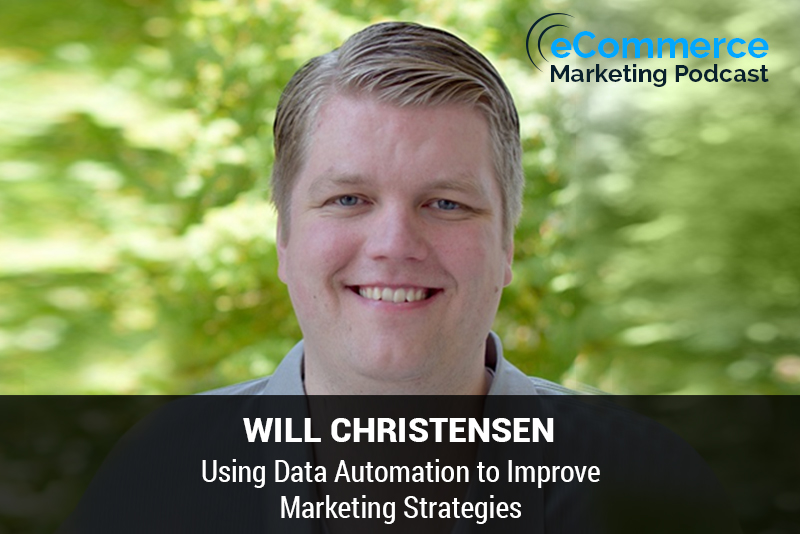
The eCommerce Marketing Podcast walks you through everything that goes into ecommerce marketing — from inbound marketing to paid advertising to conversions. Learn the strategies top marketing experts use to grow their businesses.
Marketing Strategies Revealed in this Episode:
- The main ecommerce marketing tasks that should be automated using data automation
- ways to automate the creation of drip campaigns and cart abandonment emails and text messages
- Recommended data automation tools
- What businesses should do data automation
- The future of data automation used for ecommerce marketing

Episode Title: Optimizing E-commerce with Data Automation
Guest: Will Christensen, Co-Founder and Innovator at Data Automation
In this episode of the eCommerce Marketing Podcast, Arlen Robinson interviews Will Christensen, Co-Founder and Innovator at Data Automation. Will shares his journey from an unpaid intern to a data automation expert, highlighting the importance of automating repetitive tasks in eCommerce. He discusses how businesses can leverage data automation to enhance customer service, manage inventory, and improve marketing strategies, ultimately saving time and increasing efficiency.
Key Takeaways:
- Introduction and Will’s Background (00:00:50):
- Will’s entry into data automation from being an unpaid intern handling repetitive tasks.
- The foundation of Data Automation and its mission to help businesses automate processes.
- Importance of Data Automation (00:04:30):
- How data is the new king, replacing the old adage that content is king.
- Real-world examples of automating repetitive tasks to improve efficiency.
- Customer Service Automation (00:07:00):
- Automating out-of-stock notifications and follow-ups to enhance customer service.
- Preemptive communication to address customer issues before they arise.
- Drip Campaigns and Cart Abandonment (00:12:30):
- Strategies to automate drip campaigns and recover abandoned carts.
- Leveraging customer trust to increase conversions through personalized follow-ups.
- Tools for Automation (00:18:00):
- Recommendations for tools like Zapier to facilitate automation.
- Importance of APIs and Zapier integrations for seamless data transfer between systems.
- Applicability of Automation for Small Businesses (00:21:00):
- Automation is beneficial regardless of business size.
- Litmus test for determining when to automate: tasks taking more than 15 minutes a day, an hour a week, or an hour a month.
- Future of Data Automation (00:26:00):
- Increasing ease of automation with evolving tools and platforms.
- Importance of asking the right questions about API availability and integration capabilities.
Guest Information:
- Name: Will Christensen
- Position: Co-Founder and Innovator at Data Automation
- Contact:
- Website: Data Automation
- Email: [email protected]











